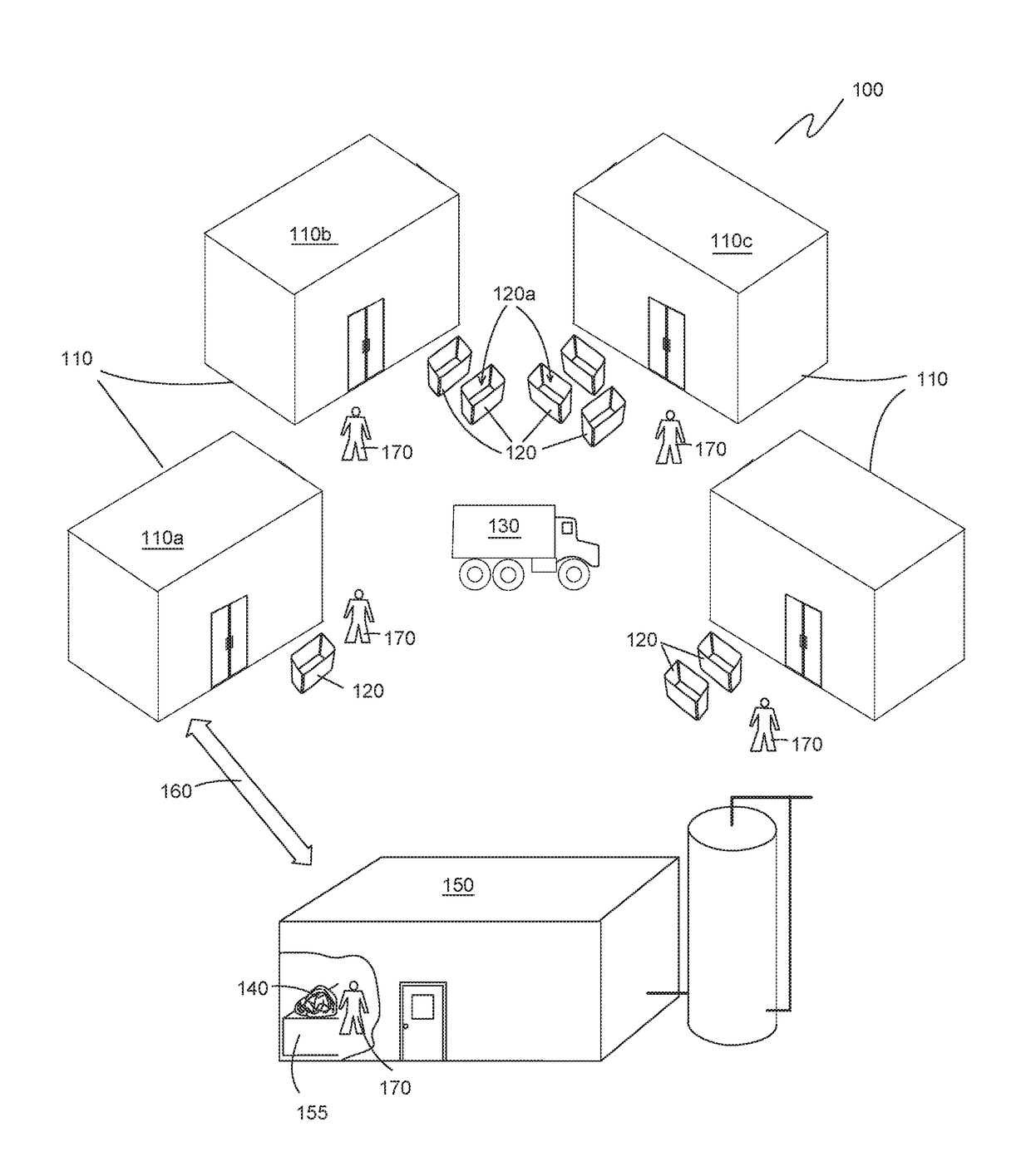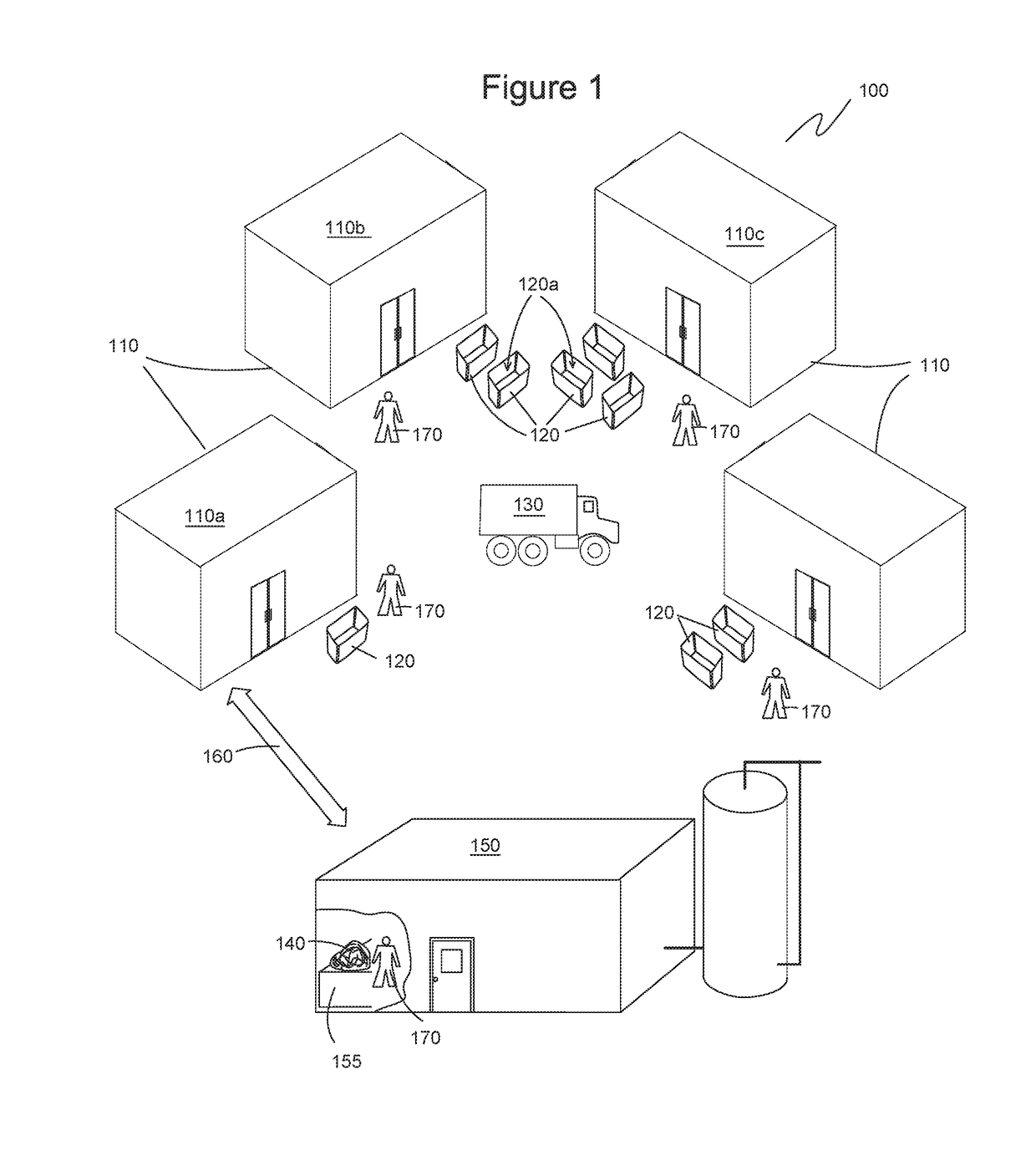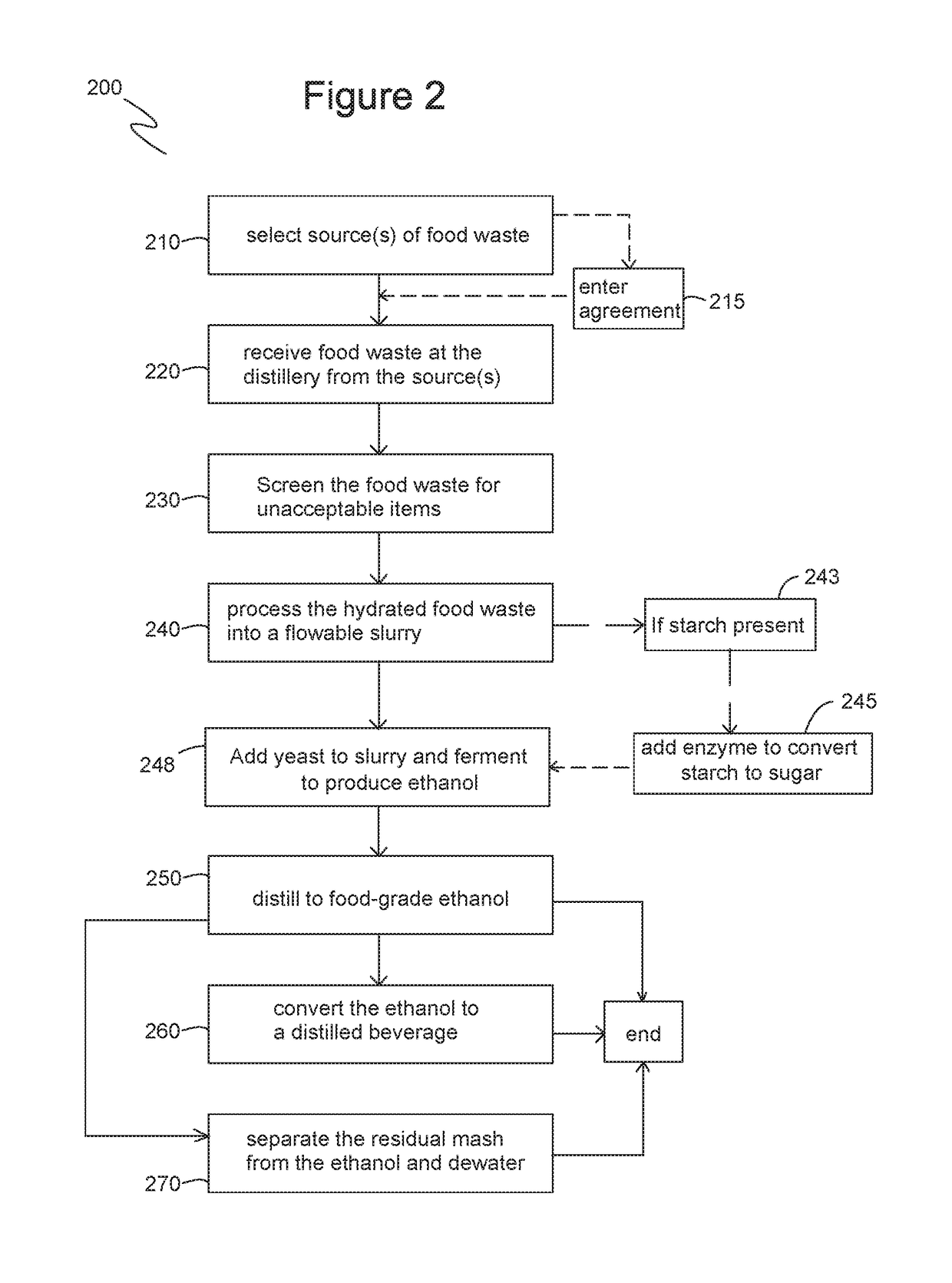Systems and methods for distilling food grade ethanol from food waste
a technology of food waste and food grade ethanol, which is applied in the field of food waste system and method for producing ethanol, can solve the problems of not being able to demonstrate cost parity with conventional landfill disposal, lack of control over waste contents, and food waste not being realized as a source of carbohydrates for food grade ethanol production, etc., and achieve the effect of preservation of freshness
- Summary
- Abstract
- Description
- Claims
- Application Information
AI Technical Summary
Benefits of technology
Problems solved by technology
Method used
Image
Examples
Embodiment Construction
[0039]Exemplary embodiments of the present invention are illustrated in FIGS. 1-3. FIG. 1 illustrates one embodiment of a system 100 for producing food-grade ethanol and distilled beverages, such as vodka. System 100 includes one or more sources 110 of food waste 140. Each source 100 has one or more bins 120 or other container used to collect food waste 140 from each source 110. For example, bins 120 are distributed to each source 110 for collecting food waste 140. A vehicle 130 is configured to pick up bins 120 from each source 110 and deliver food waste 140 to a distillery 150. Distillery 150 is equipped to process food waste 140 and distill the processed food waste 140 to food-grade ethanol or distilled beverages, such as vodka, gin, or the like. Workers 170 look for and remove unacceptable items from food waste 140. In some embodiments, system 100 is sited in an urban location where a dense population generates food waste 140 in sufficient quantities to supply distillery 150 loc...
PUM
| Property | Measurement | Unit |
|---|---|---|
| temperature | aaaaa | aaaaa |
| weight | aaaaa | aaaaa |
| energy | aaaaa | aaaaa |
Abstract
Description
Claims
Application Information
 Login to view more
Login to view more - R&D Engineer
- R&D Manager
- IP Professional
- Industry Leading Data Capabilities
- Powerful AI technology
- Patent DNA Extraction
Browse by: Latest US Patents, China's latest patents, Technical Efficacy Thesaurus, Application Domain, Technology Topic.
© 2024 PatSnap. All rights reserved.Legal|Privacy policy|Modern Slavery Act Transparency Statement|Sitemap



